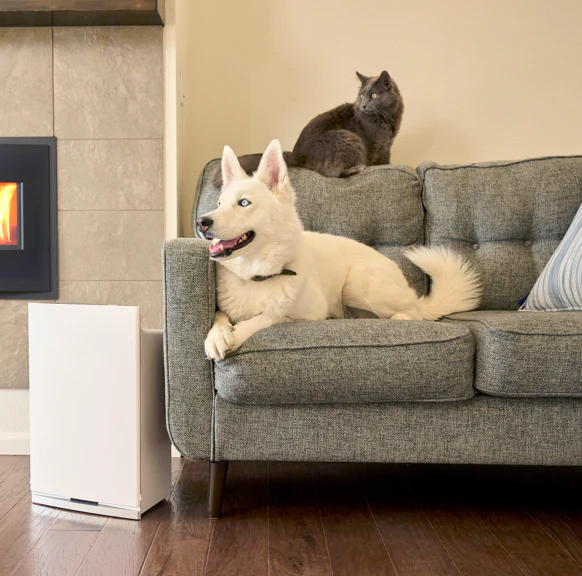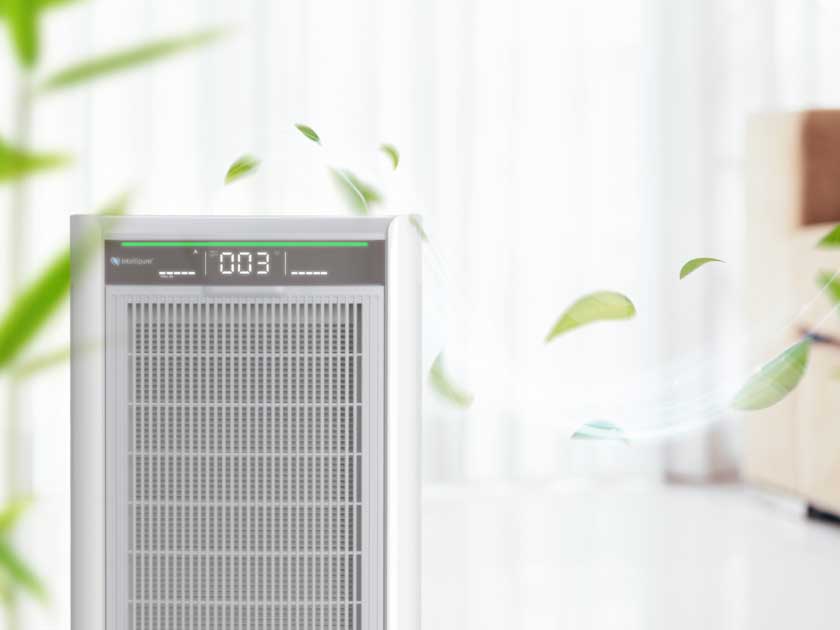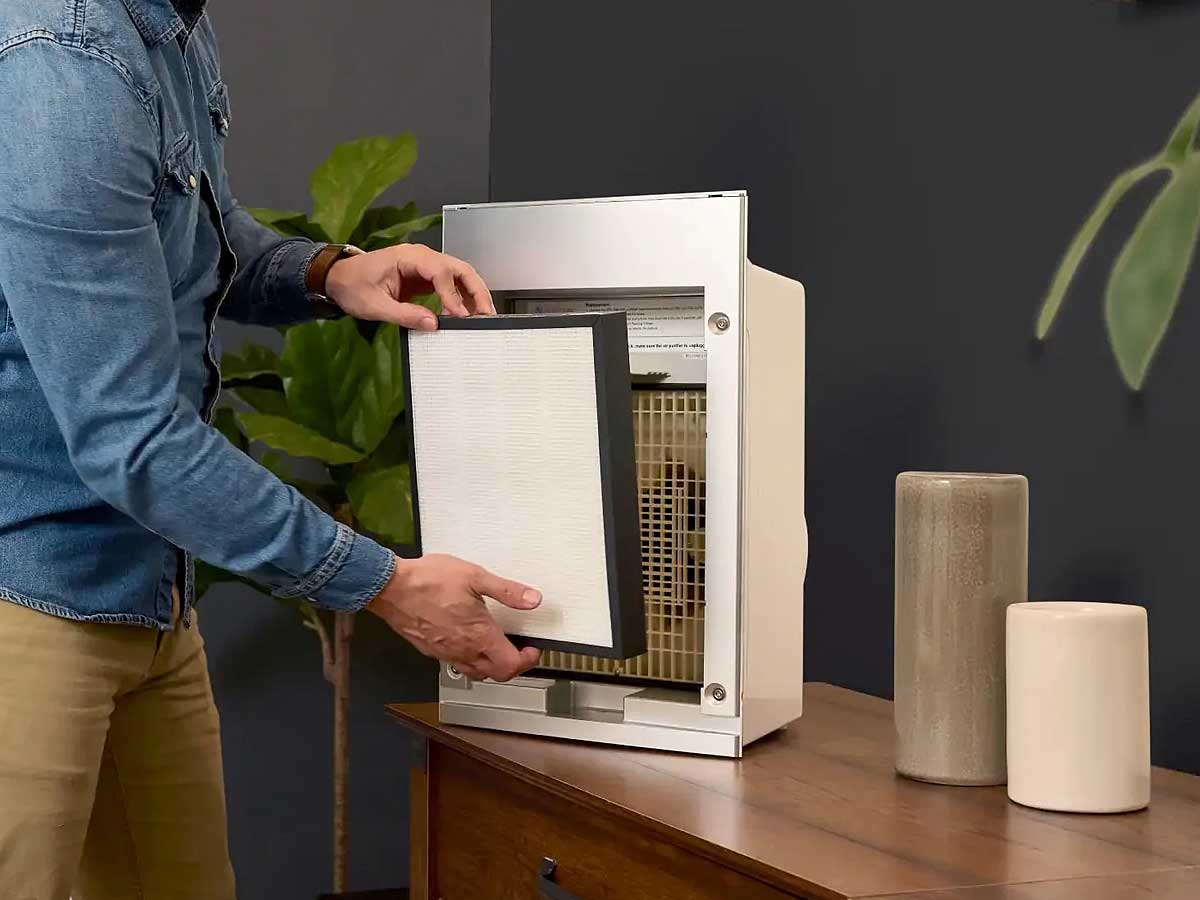
Summary
- Air purifiers remove particles, germs, and odors, while humidifiers add moisture to relieve dryness, congestion, and irritation.
- Both devices can safely run together in the same room as long as the humidifier mist is not directed into the purifier’s intake.
- Using both improves indoor air quality and comfort by reducing allergens and maintaining ideal humidity (30–50%).
- Key concerns include over-humidification, proximity, electrical load, and ultrasonic humidifiers producing mineral “white dust.”
- For best results, monitor humidity with a hygrometer, clean and maintain both devices regularly, and place them for optimal airflow.
Indoor air quality has a big impact on not just your health but also your comfort. Clean air is always better, but there are also times when you want more moisture in the air too. A humidifier is an excellent tool for adjusting indoor air humidity levels. While an air purifier and a humidifier have different functions, they can work together to benefit both your health and personal comfort.
Functionality of Humidifiers and Air Purifiers
To better understand the relationship between an air purifier and a humidifier you need to know a bit more about how each one works.
An air purifier’s job is to remove bad things from the air like tiny particles, mold and germs. They were a key tool in fighting COVID-19 transmission by reducing the number of virus particles in the air. The most common type of air purifier uses special filter media like HEPA filters and activated carbon filters to capture airborne contaminants. Air is drawn into the air purifier by a fan which pulls the air through the filter media. The cleaned air is then returned to the room.

A humidifier is used to increase indoor humidity levels by introducing water vapor into the air. This can help reduce nasal irritation, make air feel warmer in the winter, relieve dry skin, and help ease respiratory illness symptoms. Humidifier types include steam, evaporative, ultrasonic (cool mist), and impeller. Steam humidifiers simply boil water as the name implies. Evaporative humidifiers use a wick to evaporate water into the air. Ultrasonic humidifiers use a high-frequency transducer to instantly change water into a fine mist. Impeller humidifiers use a spinning fan or disc to hurl water against the inside of the machine to create a fine mist. Which method you choose depends on your situation and preferred outcome.
Compatibility of Using Both Devices Together
Can you run an air purifier and a humidifier in the same room? Absolutely. There’s no need to choose between indoor air quality and humidity level, you can have both. As long as the humidifier output is not aimed directly at the air purifier intake there should be no negative interaction due to simultaneous operation. Too much moisture can affect air purifier device performance or smart device features, mainly if excess moisture soaks the filter media. With sufficient room size it should not be a problem to separate the two devices from each other during operation.
Benefits of Simultaneous Use
Using an air purifier along with a humidifier offers the benefits of not only improved indoor air quality, but also optimal humidity for comfort. For example the dryness of indoor air during the winter can increase static electricity, warp wood and dehydrate the body. A humidifier used along with a hygrometer (to measure moisture in the air) can help maintain the perfect humidity level in your home. Meanwhile an air purifier system can work to remove airborne particles. Respiratory diseases and illnesses such as asthma, bronchitis and chronic obstructive pulmonary disease (COPD) can all benefit from clean air with an ideal moisture level. Those who suffer from allergies such as pollen, pet dander, dust mites or mold spores can also benefit from both devices.
Potential Concerns and Solutions
While the potential for problems when running both an air purifier and a humidifier is low, there are a few situations you need to know about.
Over-Humidification
If the air becomes too wet new issues may crop up. The biggest problem for allergy sufferers is that mold, mildew and dust mites all thrive in humid air. Even with an air purifier in consistent use if high humidity conditions persist, allergens may continue to grow. In severe cases where humidity reaches extremely high levels, the air purifier filter may become waterlogged and less efficient.
Proximity
Proper device placement is important. As mentioned earlier the outlet of the humidifier needs to be kept away from the air purifier intake. Proper spacing is ideally several feet apart. Direct the humidifier mist away from the air purifier. If the air purifier draws in overly moist air it could shorten the filter life and possibly lead to microbe growth on the filter itself. Also make sure the area is free of obstructions that can cause poor airflow so that both devices are allowed adequate air circulation.
Electrical Overload
Make sure both devices are plugged into circuits that can handle both operating at the same time. Each device should be labeled with its operating wattage and amperage. Make sure the circuit is rated for the combined load.
Noise
Depending on the type of humidifier it may use a fan, which makes noise. Portable air purifiers also rely on a fan to move air through the unit. Try using lower fan speed to reduce noise output, but be aware that lower fan speeds mean less air is being moved through either unit. This is a problem usually only with a smaller room size.
Fine Particles
Ultrasonic humidifiers may give off a fine, white powder if used with normal tap water. This white powder is made up of the minerals dissolved in the water, which is technically classified as particle pollution. Use distilled water only in an ultrasonic humidifier to avoid this problem.

Practical Tips for Combined Use
If you want to get the most out of using your air purifier and humidifier together, follow these tips.
Follow Routine Maintenance
Air purifiers with clogged filters don’t clean air. Humidifiers should be cleaned regularly according to the owner’s manual. Any built up minerals or other dirt should be removed completely.
Watch Your Humidity
Use a hygrometer to monitor your inside humidity. The ideal indoor humidity range is between 30% and 50%. By monitoring your own relative humidity you can adjust your humidifier run times and avoid excess humidity levels that may cause mold growth or fuel dust mites.
Location, Location, Location
The correct placement for an air purifier is the center of the room, ideally between three and five feet off the ground. This allows for the best air circulation around the unit. The humidifier should be placed in an equally open space to allow for good airflow, but not close enough that the air purifier gets soaked.
Conclusion
We hope it is clear now that you don’t have to choose between pollen removal and air moisture replenishment, you can have both. You can enjoy clean air, reduced allergies, easier breathing, and better health overall by using an air purifier along with a humidifier when appropriate. The Intellipure Compact is an ideal air cleaning solution for rooms up to 500 square feet. It removes up to 99.97% of allergens, mold, and viruses from the air while the multi-stage pre-filter captures harmful gases and odors.

 Benefits To A Smart Home Connected Air Purifier
Benefits To A Smart Home Connected Air Purifier




